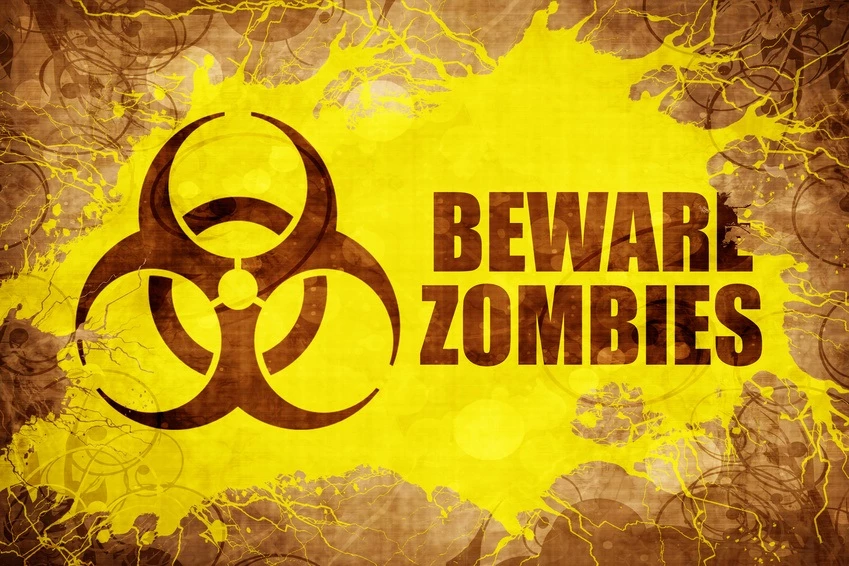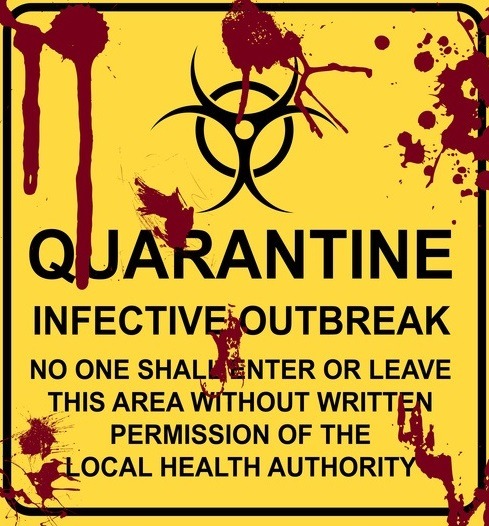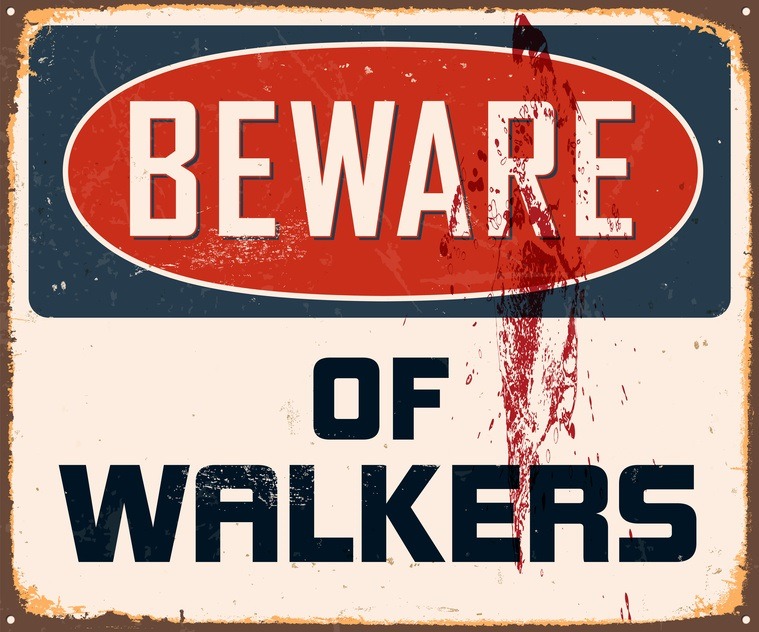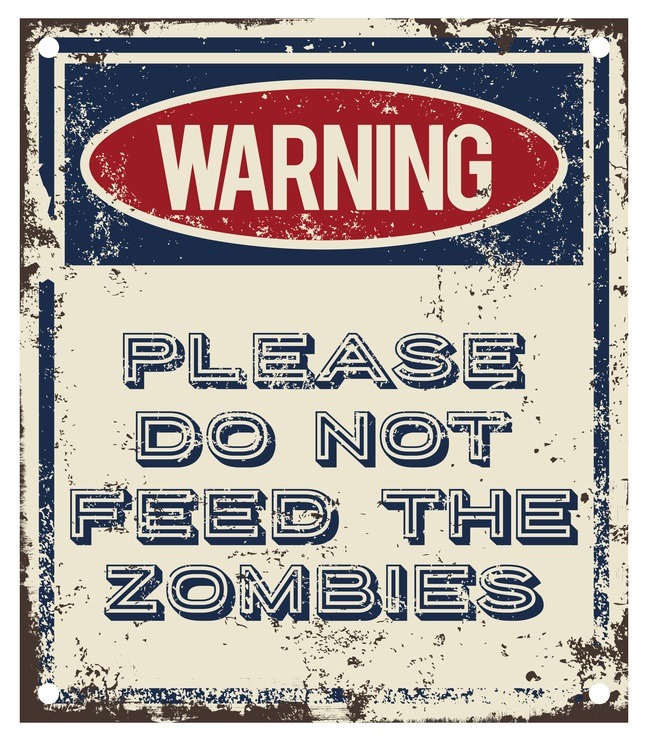
The End Is Not Nigh – But Online Brand Protection Is Still A Good Idea…
 June 11, 2017
June 11, 2017 How often do you think about online brand protection? If your answer is “not so often, I’m too busy”, it’s a good thing you’ve found time to read this article. Grab yourself a cuppa and a biccie…
So, you’ve put a lot of effort, time (let’s say that word ‘time’ again) and resources into building a reputation for your brand. But, do you have a plan that will protect it in case something happens? Many business owners consider that such threats or attacks can’t or won’t happen to them. Or, don’t have the time to devote to putting together a plan. However, in order to ward off a possible apocalypse (we love a zombie reference), you need to believe that ‘prevention’ is a priority over ‘cure’. Something that Rick Grimes would certainly give his approval to.
Just how Vulnerable Are Brands Online?
 While the internet offers many exciting opportunities and advantages, such as global reach and accessibility, it’s also hides a general lack of control.
While the internet offers many exciting opportunities and advantages, such as global reach and accessibility, it’s also hides a general lack of control.
The truth is threats or attacks can happen at any time, and can come from anyone, anything (!), anywhere in the world.
The effects can be felt in many ways:
- Financially – According to MarkMonitor, brands lost more than $350 billion in 2015 because of online brand abuse. Being exposed to threats can cost a brand heavily. For example, a US-based company will spend on average $2.9 million when a cyber attack occurs.
- Reputation wise – When a company is made vulnerable by an attack, their reputation can take a real bruising. A brand IS its name – an embarrassing online incident will not be overlooked by partners, sponsors or clients.
- Customer trust – When people choose to do business with your company, it implies trust – often hard earned and over a prolonged period of time. If your brand is attacked, then all this good work is compromised, your clients will have doubts as to whether it’s safe to continue working with your organisation.
- Exposure to legal liability – Nowadays, hackers can find smart ways to access sensitive information, such as legal documents or credit card details. What’s worse, they often then choose to disclose it to the public.
- Counterfeits – This is a significant risk, especially for eCommerce websites. Fakes are everywhere. The majority of counterfeits are products copied from big brands.
How to Protect Your Brand Online

1. Register a Trademark
This is a yummy no-brainer. It will allow you to take legal action against anyone who uses your brand without your permission. However, this only applies to the area where you hold the trademark. A timely trademark registration can protect more than just the name of a brand. It can even go as far as protecting the iconic colour of a brand.
You’re probably familiar with Cadbury’s chocolate, Dairy Milk, and its distinctive purple wrapping. The company adopted this colour in 1914 as a tribute to Queen Victoria. A few years back, they wanted to trademark the colour Pantone 2865c, which is the exact shade of purple they use. Unfortunately, Cadbury lost this right in court against Nestle. This means that every brand can now use that exact colour for their products if they wish to and Cadbury can do nothing about it.
2. Secure Domain Names
The easiest way a brand is attacked is usually through its domain name. Protect against this by registering all the domains that can be even slightly associated with your company. For example, yourcompany.com plus the other extensions such as .net, .name, .cc, or so. New domains are added from time to time so, keep on top of trends (.uk, .tv, .co). You can also register domains by adding negative words next to the company name, such as “sucks” or “scam”.
 Another important thing to be aware of is typosquatting or cybersquatting. People can easily misspell your website’s name, and this can lead them to a website that’s not yours.
Another important thing to be aware of is typosquatting or cybersquatting. People can easily misspell your website’s name, and this can lead them to a website that’s not yours.
Make sure you register the most common variations that are used when misspelling your company’s name.You obviously won’t be able to keep up with every new extension or buy all the domains, so you need to combine this with other strategies – perhaps some social listening around keywords? Lastly, make sure that you use rooting-tooting security for your primary domain.
3. Ensure Policy Compliance
All business partners, including employees, need to be aware of your company’s policy. Think of them as an extension of your brand – a member of your survivor’s pod. Have a compliance policy in place – make it clear, succinct and shareable. It will help your audience, and your customers spot suspicious activity and promotes your company as a trusted pair of hands.
4. Brand impersonation is a big trend right now
 Use social media listening tools to stay up-to-date with what people say about your company. This type of tool will be able to tell you whether there’s suspicious activity on your social media accounts. There are a variety of great tools out there, including Falcon.IO (one of our faves), SocialBakers, Hootsuite and Buffer.
Use social media listening tools to stay up-to-date with what people say about your company. This type of tool will be able to tell you whether there’s suspicious activity on your social media accounts. There are a variety of great tools out there, including Falcon.IO (one of our faves), SocialBakers, Hootsuite and Buffer.
Setting up alerts means that your company will be able to see the zombie hoards coming, well before they get to you.
5. Create a Crisis Plan
You know what they say: “Hope for the best, prepare for the worst”. And, to many brands, a social media moderation or community management company will come across as the ‘voice of doom’ – we’ve certainly been called that on many occasions. However, (we) they know their stuff, are battle-hardened and have seen it all happen before!
Any damage to your brand can be minimised as long as there’s a firm plan in place. The success to any plan is to ensure that everyone knows what it is, where the information is kept and who is responsible for what action/s. Who is your champion? Your best negotiator, peace-maker, soothsayer, gunslinger…? Therefore, the first step is to include all stakeholders from the start – including your employees.They represent your company, so they need to know what to do in case a crisis arises. Plus, they can act ahead of time by figuring out if there are any vulnerabilities.
Here are a few pointers:
- The team – Obviously, it would be ideal if you could appoint a team to ‘surround the perimeter’ and monitor your brand 24/7. This includes monitoring social media, Google alerts and basically any channel that your company uses to communicate. However, often cost/human resources makes this impossible. Therefore, an online tool can be the answer.
- The leader – If a vulnerability occurs, the team needs to have a kick-ass leader that has the authority (company, PR, legal, etc.) and confidence to sign-off any official statements. This person will also coordinate with the other employees and make sure that information as to how to behave is clear.
- Urgency – You will need to decide what your customers should be told. The team will need to be fully tooled-up so as to address facts in a transparent manner. Your clients don’t have to be worried, but rather informed that you’re doing your best to solve this issue. Time is of the essence here, contact them as soon as you can so that they continue to have trust in your brand.
Make Online Brand Protection Your Priority
 Brands are susceptible and vulnerable to attacks if they don’t protect themselves. Even if you aren’t in the office when a crisis takes place, having a plan will help minimise the damage and head off the apocalypse.
Brands are susceptible and vulnerable to attacks if they don’t protect themselves. Even if you aren’t in the office when a crisis takes place, having a plan will help minimise the damage and head off the apocalypse.
The help is out there and not all solutions have to be costly or time-consuming.
Drop us a line and let us be your champion!


 Share This Post
Share This Post